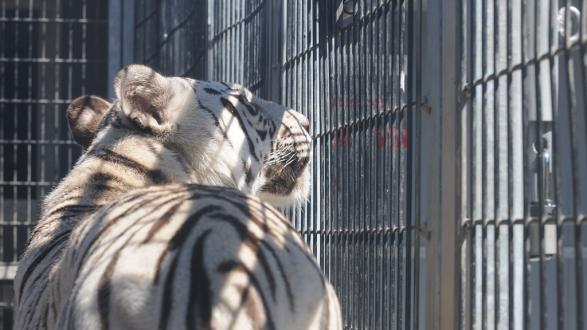Our recognition of animals’ rights, and our ability to effectively and actionably codify those rights, is directly related to traditional efforts to define, promote, and enforce standards of human rights. That relationship is easier to see than ever before, and more than ever depends on our willingness to embrace it.
Until recently, the link between animal welfare and human rights was acknowledged by a predictable cadre of interest groups and the occasional edgy opinion piece in a national publication. As recently as 2018, New York Times columnist Nicholas Kristof was able to ask compellingly whether promotion of animal rights was misguided in light of commensurate human suffering. Kristof answered in the negative, but the question illuminated a sharp divide in the public mind between animal rights and human rights.
In just over a year since Kristof’s column, public perception has begun to change. As in so many cases, the change may be the result of a broader, more vividly conducted conversation more immediately and obviously relevant to the public at large.
As we near public consensus on these matters, longstanding research has a chance at last to truly drive international policy. The same is true of the relationship between animal rights and human rights.
Increasingly stark documentation of the effects of climate change, particularly the UN’s recent report on declining biodiversity, has galvanized public attention to an extent that serious, if belated, efforts to address human contributions to climate change and the concomitant/resultant mass extinctions attending it are newly imaginable.
For all its shocking information about the state of global biodiversity, the UN report makes few entirely new observations. Declining biodiversity had long been documented in the scientific and popular literature, as has the human contribution to that decline and to climate change. Inseparable from that documentation is the impact of climate change on human rights.
From water shortages and increased desertification to the increased frequency of extreme weather events and the threatened submersion of entire island countries due to rising sea levels, to understand climate change is to acknowledge its attack on our ability to eat, drink, and live. Our habitat, in other words, is severely threatened.
As we near public consensus on these matters, longstanding research has a chance at last to truly drive international policy. The same is true of the relationship between animal rights and human rights.
Psychologists and sociologists have long recognized a documented link between concern for the well-being of animals and a respect for human rights. Simply put, the stronger a person’s belief in the absolute divide between humans and other animals, the more prone that person is to dehumanizing others.
Psychologists and sociologists have long recognized a documented link between concern for the well-being of animals and a respect for human rights. Simply put, the stronger a person’s belief in the absolute divide between humans and other animals, the more prone that person is to dehumanizing others. This dehumanization is linked directly to a host of beliefs and actions inconsistent with a general promotion of human rights, including racial prejudice, misogyny, and violent behavior.
The negative effects of such a firm belief in the human-animal divide also drives human rights crises across societies and cultures. The U.S. livestock industry is a compelling case in point. While a fashion has emerged for the nominally responsible production of beef, pork, poultry, and eggs, the majority of livestock are raised, and their productive lives extended, in conditions that are incompatible with any significant recognition of a continuum of dignity and respect between human and animal populations.
Predictably, given what we have learned from academic studies, the U.S. livestock industry itself is a nightmare of human rights abuses ranging from the systematic underpayment of undocumented workers to the extremely dangerous conditions in which they work.
The more clearly we begin to think of climate change as a threat to the habitat in which we live, the less tenable we will find the old presumption of a stark distinction between animals and humans, animal rights and human rights.
Some processing plants are run as labor camps that systematically defraud and all but enslave their employees, many of whom are mentally disabled. We know that some have run this way for more than three decades, leaving open the question of how many more are still operating in the United States, let alone in other parts of the world.
Animal agriculture is also a major driver of climate change. Grazing occupies more than a quarter of the planet’s available land, accounts for the vast majority of Brazil’s breakneck deforestation, and drives water contamination and drought. Animals raised for food are the world’s largest producers of key greenhouse gases methane and nitrous oxide, whose levels the National Institutes of Health expect to rise more than 80 percent by 2050.
The question of animals’ rights, then, is no longer simply an ethical one. Indeed, the more clearly we begin to think of climate change as a threat to the habitat in which we live, the less tenable we will find the old presumption of a stark distinction between animals and humans, animal rights and human rights. As policy analysts, we have a blossoming opportunity to merge the two conversations at a time of existential significance for life on our planet.
____________________
Lauren Nicole Core is a Pacific Council member and a consultant at the World Bank.
The views and opinions expressed here are those of the author and do not necessarily reflect the official policy or position of the Pacific Council.




